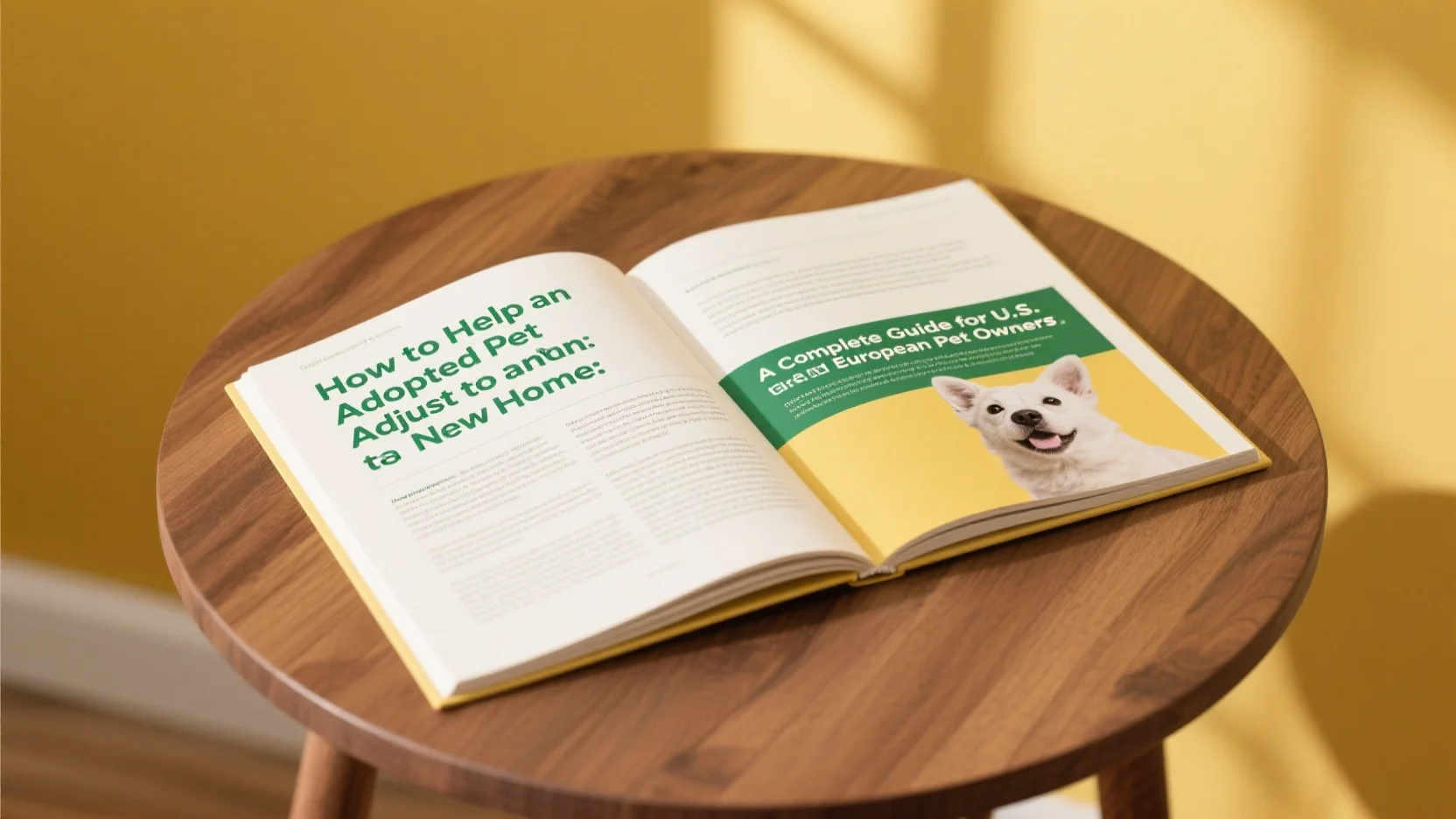How to Help an Adopted Pet Adjust to a New Home: A Complete Guide for U.S. and European Pet Owners

A comprehensive guide for pet owners in the United States and Europe on helping newly adopted pets transition smoothly into their forever homes. This practical resource covers everything from creating safe spaces and establishing routines to understanding pet behavior and building trust. Whether you’ve adopted a rescue dog or cat, these evidence-based strategies will help reduce anxiety and create a strong foundation for a lasting bond with your new companion animal.
Why Helping Adopted Pets Adjust Is So Important
Keyword focus: adopted pet adjustment, rescue dog behavior, adopted cat behavior
Newly adopted pets may display anxiety, fear, or confusion in unfamiliar surroundings. Understanding the emotional and behavioral needs of a rescue animal is key to building trust and long-term companionship.
Step 1: Prepare Your Home Before Adoption Day
Keywords: preparing home for adopted dog, adopted cat home setup
Before your adopted pet arrives, create a calm, designated space where they can feel safe. This reduces stress and gives them time to decompress.
Essentials to include:
- Soft bedding or a crate
- Fresh water and food bowls
- Litter box for cats or designated potty area for dogs
- Chew toys or comfort items
- Baby gates (for managing space in larger homes)
Tip: Keep this space quiet and limit foot traffic for the first few days.
Step 2: Keep a Consistent Routine
Keywords: rescue pet daily schedule, adopted dog feeding times, cat routine
Pets thrive on routine, especially those from shelters where structure was part of daily life. Introduce regular feeding times, walks (for dogs), and play sessions.
- Feed at the same time each day.
- Walk your dog on consistent routes.
- Clean the litter box daily at the same hour.
- Introduce crate or room time for structure and safety.
This predictability builds a sense of security.
Step 3: Use Positive Reinforcement Training
Keywords: positive reinforcement for rescue pets, training adopted pets
Avoid punishments, especially early on. Instead, reward desired behaviors using treats, praise, or affection. This builds trust and encourages learning.
Examples:
- Reward calm behavior during walks.
- Use clicker training to teach basic commands.
- Redirect bad behavior gently without yelling.
For rescue pets, positive training helps them unlearn fear-based habits from past trauma.
Step 4: Give Your Pet Time to Decompress
Keywords: 3-3-3 rule adopted pets, decompression for rescue dogs/cats
Many pet experts recommend the “3-3-3 Rule”:
- 3 days to decompress
- 3 weeks to start learning routines
- 3 months to feel truly at home
During this period, allow your pet space to adjust. Avoid overwhelming them with too many visitors, toys, or activities.
Watch for signs of stress like hiding, excessive barking, or lack of appetite.
Step 5: Visit a Vet Within the First Week
Keywords: first vet visit after adoption, health check for rescue pet
Even if your pet came with health records, schedule a wellness exam shortly after adoption. Ask about:
- Vaccinations and booster shots
- Spaying or neutering status
- Microchipping and registration
- Dental health
- Parasite prevention
This step ensures your pet’s long-term well-being and helps you establish a veterinary care routine.
Step 6: Bond Slowly and Respect Their Pace
Keywords: bonding with adopted dog, building trust with rescue cat
Some pets warm up quickly; others need weeks. Respect their pace and celebrate small progress like tail wags or approaching you on their own.
Ideas to build trust:
- Sit near them while reading or relaxing.
- Offer treats from your hand.
- Play with low-pressure toys like feather wands or tug ropes.
Don’t force physical contact—let your pet initiate closeness when they’re ready.
Step 7: Provide Mental Stimulation and Enrichment
Keywords: pet enrichment for rescue animals, stimulation for adopted pets
Boredom can lead to destructive behavior, especially in intelligent breeds. Keep your pet’s mind active with:
- Puzzle toys and treat-dispensing feeders
- Obedience training sessions
- New walking routes
- Cat towers and bird-watching perches
This not only improves behavior but also helps build confidence.
Bonus Tips: What Not to Do When Adopting a Pet
Keywords: adoption mistakes, rescue pet adjustment tips
Avoid these common errors:
- Introducing too many people too soon
- Allowing off-leash walks in unfamiliar areas
- Leaving them home alone for long hours right away
- Changing food or routines abruptly
Final Thoughts: Give Them the Time and Love They Deserve
Keywords: adopted pet success stories, life with rescue animals
Helping an adopted pet adjust to a new home isn’t about quick fixes—it’s about commitment, empathy, and slow, steady steps. Whether you’re a pet owner in Germany, France, the UK, or the U.S., these techniques create a loving foundation that can last a lifetime.
Related Searches:
- How to make a rescue dog feel safe
- First week with adopted cat checklist
- Shelter dog won’t eat or drink
- Helping adopted dog overcome fear
- Preparing apartment for adopted pet
By following these practical, humane strategies, you’ll not only help your adopted pet adjust—you’ll earn a lifelong friend.